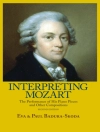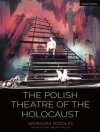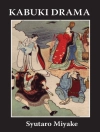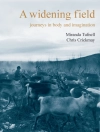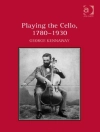Each John Wick film has earned more money and recognition than its predecessor, defying the conventional wisdom about the box office’s action movie landscape, normally dominated by superhero movies and science fiction epics.
As The Worlds of John Wick explores, the worldbuilding of John Wick offers thrills that you simply can’t find anywhere else. The franchise’s plot combines familiar elements of the revenge thriller and crime film with seamlessly coordinated action. One of its most distinctive appeals, however, is the detailed and multifaceted fictional world—or rather, worlds—it constructs. The contributors to this volume consider everything from fight sequences, action aesthetics, and stunts to grief, cinematic space and time, and gender performance to map these worlds and explore how their range and depth make John Wick a hit.
A deep dive into this popular neo-noir franchise, The Worlds of John Wick celebrates and complicates the cult phenomenon that is John Wick.
İçerik tablosu
Acknowledgments
Introduction: The Worlds of John Wick, by Caitlin G. Watt and Stephen Watt
Part I: John Wick and Action Cinema
1. Red Circle of Revenge: Anatomy of the Fight Sequence in John Wick, by Lisa Coulthard and Lindsay Steenberg
2. Hidden in Plain Sight: Stunt-Craft Work in John Wick and the Networked Worlds of 87Eleven Action Design, by Lauren Steimer
3. Killing in Equanimity: Theorizing John Wick’s Action Aesthetics, by Wayne Wong
Part II: The Economies and Phenomenology of the Wickverse
4. The Continental Abyss: John Wick vs. the Frankfurt School, by Skip Willman
5. Bitcoin, Shitcoin, Wickcoin: The Hidden Phenomenology of John Wick, by Aaron Jaffe
Part III: John Wick : Other Cultural Forms and Genres
6. Fortune Favors the Bold: The State of Games and Play in the John Wick Films, by Edward P. Dallis-Comentale
7. ‘The One You Sent to Kill the Boogeyman’: Folklore and Identity Deconstruction in the John Wick Universe, by Caitlin G. Watt
8. Captain Dead Wick: Grief and the Monstrous in the John Wick and Deadpool Films, by Mary Nestor
Part IV: John Wick ‘s Matrix: Space and Time
9. Classical Orders, Modernist Revisions, Fantastical Expansions: Reading the Architecture of the John Wick Franchise, by Andrew Battaglia and Marleen Newman
10. Out of Time and Going Sideways: John Wick, Time Traveler, by Charles M. Tung
11. John Wick’s Blank Cosmopolitanism and the Global Spatiality of the Wickverse, by Mi Jeong Lee
Part V: Gender and the Body in John Wick
12. John Wick’s Multiply Signifying Dogs, by Karalyn Kendall-Morwick
13. Masculinity, Isolation, and Revenge: John Wick’s Liminal Body, by Owen R. Horton
14. Professionalism and Gender Performance in the John Wickverse, by Vivian Nun Halloran
15. Style and the Sacrificial Body in John Wick 3, by Stephen Watt
Bibliography
Index
Yazar hakkında
Caitlin G. Watt’s work, which focuses on gender and sexuality and narrative theories of character in medieval romances, has appeared in Neophilologus, Erasmus Studies, Medieval Feminist Forum, and Postmedieval. Her current project examines the development of the Arthurian storyworld in medieval manuscripts. Watt is Lecturer in the Department of English at Clemson University in Clemson, South Carolina.
Stephen Watt’s most recent books include Bernard Shaw’s Fiction, Material Psychology and Affect: Shaw, Freud, Simmel and ‘Something Dreadful and Grand’: American Literature and the Irish-Jewish Unconscious. In addition, he coedited Ian Fleming and James Bond: The Cultural Politics of 007. Most of his published writing treats one of three topics: Irish Studies; drama, film, and performance studies; or the contemporary university. Watt is Provost Professor Emeritus of English and former Associate Dean of the School of Art, Architecture + Design at Indiana University, Bloomington.


